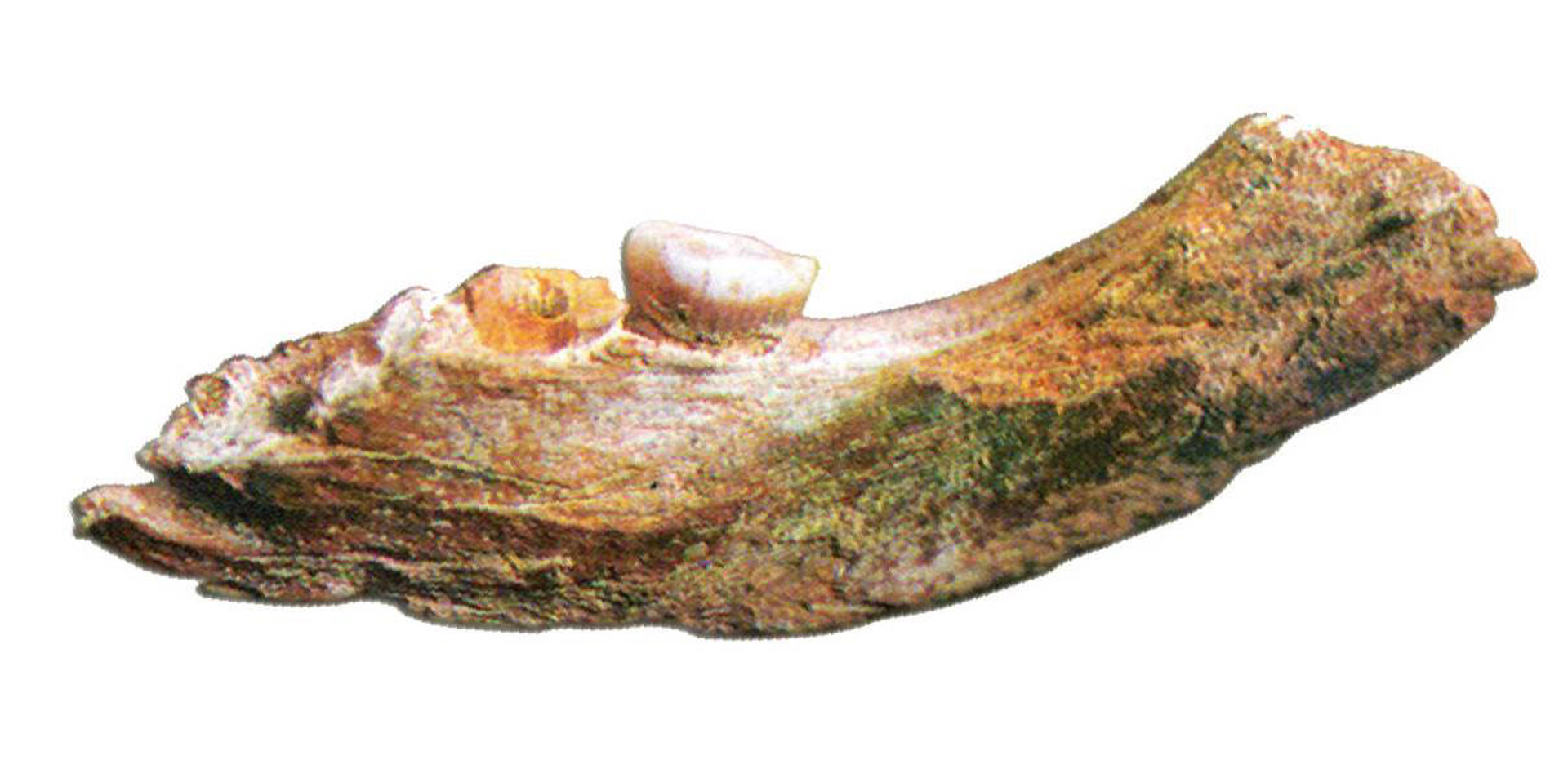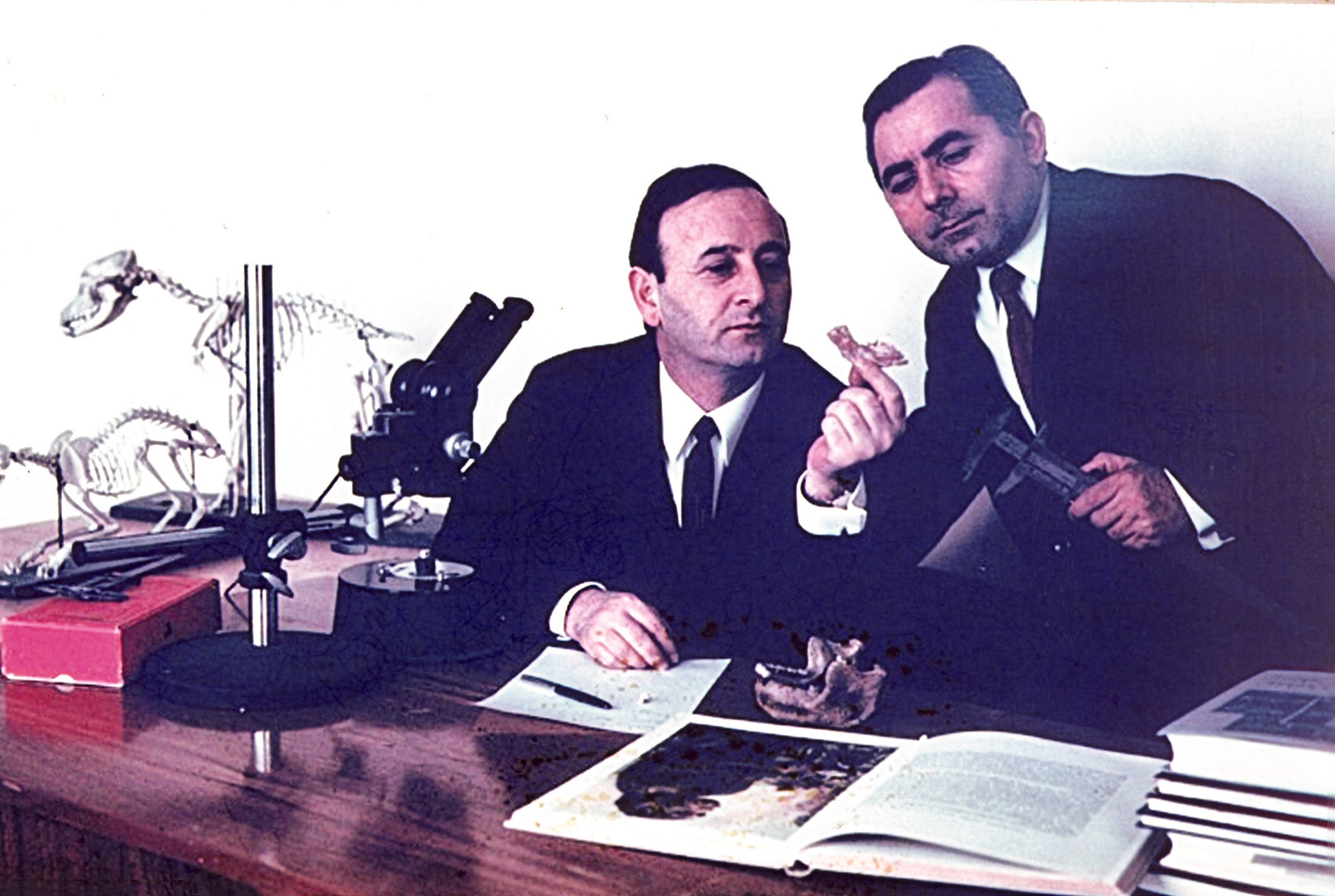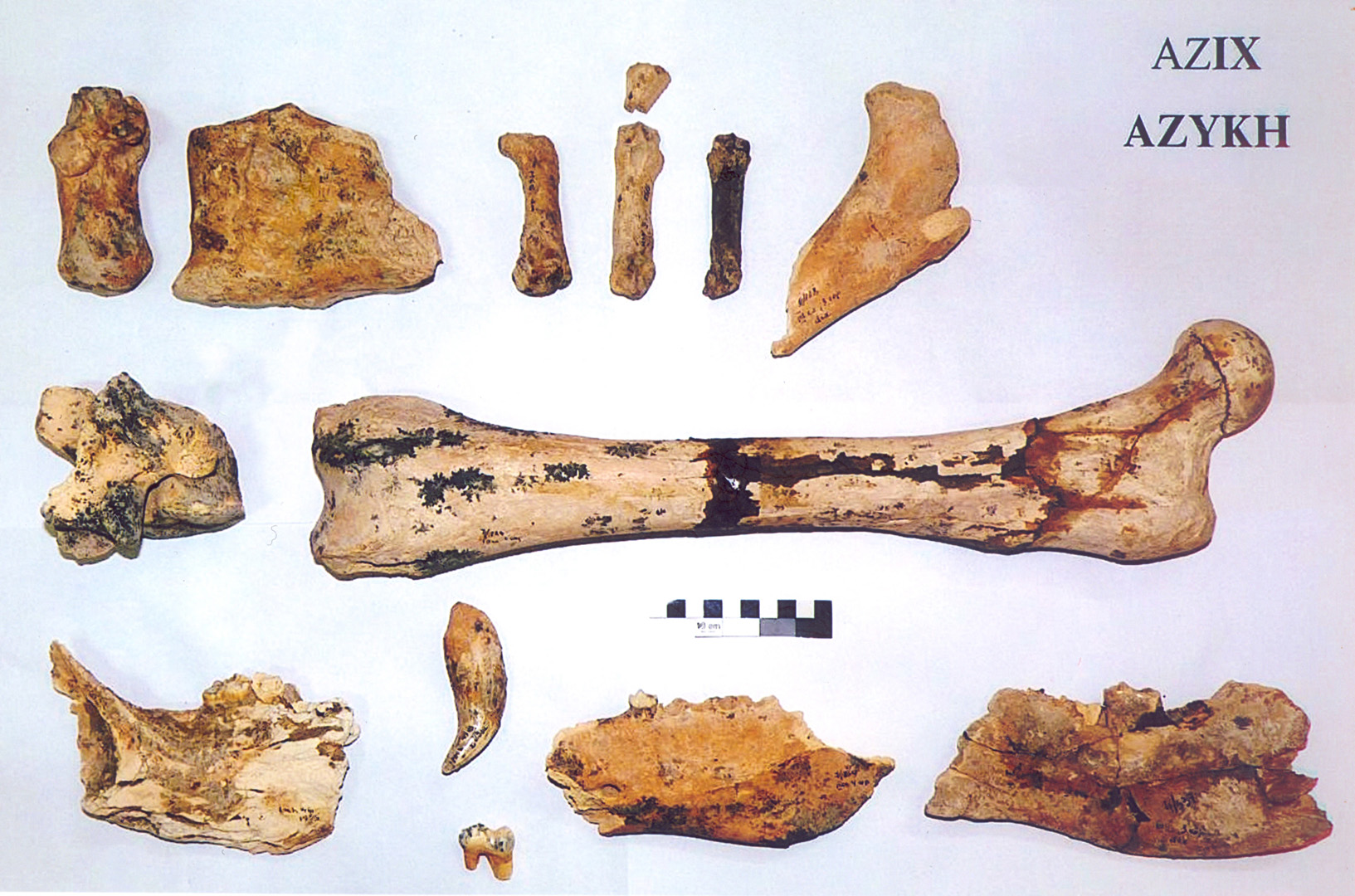AZIKHANTROP
Besides archaeological materials, paleoanthropological findings were also discovered during archeological excavations in different countries of the world. One of them was found in multilayered Azikh Paleolithic habitation located in Khojavend district of the Republic of Azerbaijan. In June 1968, Paleolithic archaeological expedition conducted by M.M.Huseynov discovered a lower jaw belonged to prehistoric man in the course of archaeological excavations carried out in the 6th horizon of the 5th layer of Azikh Cave referred to the Middle Acheulean period. The remains of prehistoric man found from the layer of Azikh concerning Acheulean culture were conditionally named “Azikhantrop” that stands for “Azikh Man”. As well as the lower jaw, stone tools and animal bones were also uncovered from the 5th layer. Moreover, there were revealed dozens of kitchen wastes, hearth places, secret place, a part of prehistoric construction built with rocks etc. from that layer.
The features of the lower jaw
The mandible was studied by Azerbaijani specialists, paleontologist Damir Hajiyev and anthropologist Rabiyya Gasimova. This paleoanthropological finding discovered from Azikh Cave is a right fragment of the lower jaw, more precisely, the right part of the mandible was fully remained. The base of that lower jaw which is completely petrified and partly changed its color and the fragment with three molars on it were well-preserved. The last tooth on the lower jaw was in a complete form while two teeth were broken during the excavations. Additionally, the incisura of the mandible along with superior part of ramus, coronoid process and articular process was found to be broken in ancient times. Third molar (wisdom tooth) on alveolar part of mandible is in a full form. The superior part of the second molar is broken however the fragments of the its middle part and root were found out. As the lower part of the Azikhantrop’s mandible was broken, its thickness was measured with the thickness between the second (M2) and the third (M3) molars and was equal to 19.5 mm.
Anthropological type of the owner of the lower jaw
In the course of paleoanthropological researches, it was identified that the jawbone of Azikhantrop belonged to the most ancient 18-22-year-old human being lived in the territory of Azerbaijan 350-400 thousand years ago.
Although the mandible found from Azikh Cave was broken, the remaining part of it was the most significant paleoanthropological finding to define physical structure of Azikh man. Thus, morphology, thickness of the jaw, structure and size of teeth have a great scientific importance for paleoanthropological comparison. The mandible discovered from Azikh was compared with Australopithecus, Archanthropus, Sinanthropus, Pithecanthropus. Carried out scientific studies gave interestingly scientific consequences. Thereby, during the scientific examinations of the lower jaw found from Azikh, it was revealed that on the one hand, for the specific features of its structure, the mandible is similar to Pithecanthropus especially the Mauer jaw, on the other hand, for its other several peculiarities to Pre-Neanderthal Man found from the layer of Arago Cave, situated in the south of France, relating to the ancient Acheulean culture. It is pretty obvious that the jawbone of Azikh Man is quite big and its body is relatively thick. In this respect, the lower jaw discovered from Azikh Cave differs from Australopithecus and had a special place among Archanthropus men for its certain characteristics. Due to its physical type, the jawbone found out from Azikh Cave is in the transitional period between Sinanthropus and Neanderthal Man.
Its place among the most ancient human remains
For this unique finding, the territory of Azerbaijan has been included on the map of “The most ancient inhabitants of Europe”. The residue of Azikhantrop has critical significance in paleoanthropologically scientific investigation of the physical structure of humans of Acheulean period in the territories of Azerbaijan and Casucasus. Additionally, such an discretion is being put forward that humans of Acheulean period lived in Azerbaijan and the Casucasus mountains were in type of Azikhantrop.


